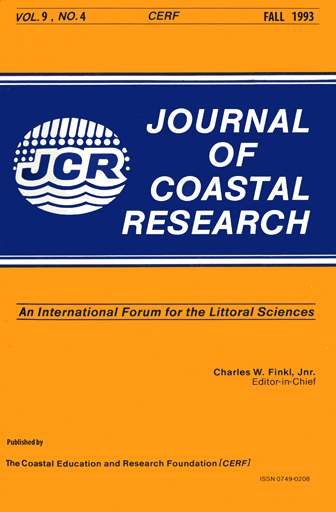Sediment Pathways in a British Columbia Fjord and Their Relationship with Particle-Associated Contaminants
Keywords:
Grab samples, sediment trend analysis, sediment transport patterns, transport environmentAbstract
About 820 bottom grab samples were collected at regular intervals over Howe Sound, a British Columbia fjord. These were analyzed for their complete grain-size distributions in order to perform a sediment trend analysis. This is a technique whereby net sediment transport patterns are determined by assessing statistically the relative changes in grain-size distributions along selected sample sequences. The analysis also provides an understanding of the behaviour of the sedimentary environment with respect to erosion, deposition or dynamic equilibrium. This information may be used to predict the build-up and/or dispersal of particle-associated contaminants. In Howe Sound, there are two pulp and paper mills which have been sources of dioxins and furans which have led to fisheries closures. In environments where total deposition is occurring (i.e., once deposited, a particle undergoes no further transport) contaminants are concentrated at locations relative to their source. Where sediment in transport becomes so fine (i.e., fine silt and clay) that size-sorting no longer occurs, contaminants have no preferred location for their deposition; rather, contaminated particles have an equal probability of deposition over the whole transport environment. In this study, the spatial distribution of existing contaminant data correlated extremely well with each of the transport environments as determined by the sediment trend analysis.


